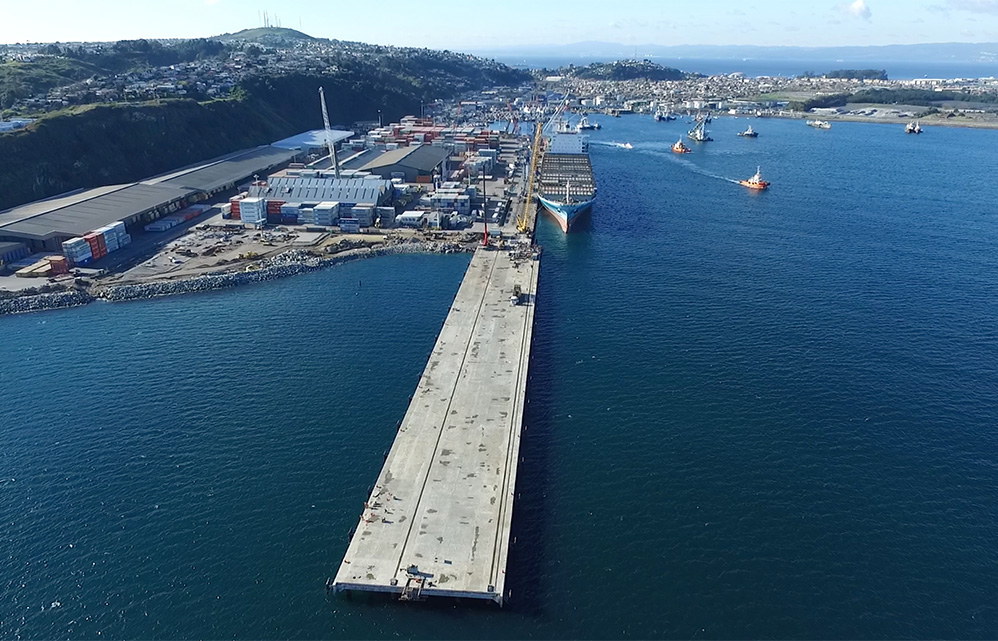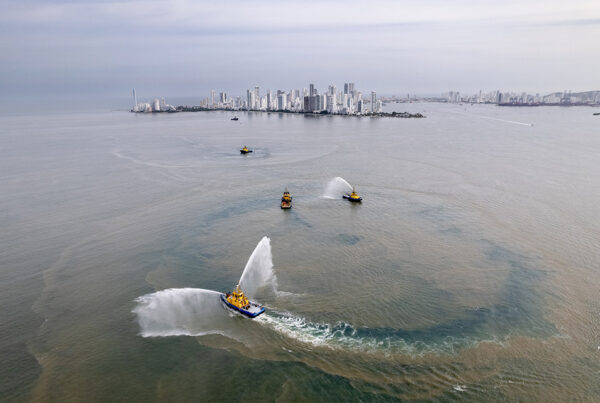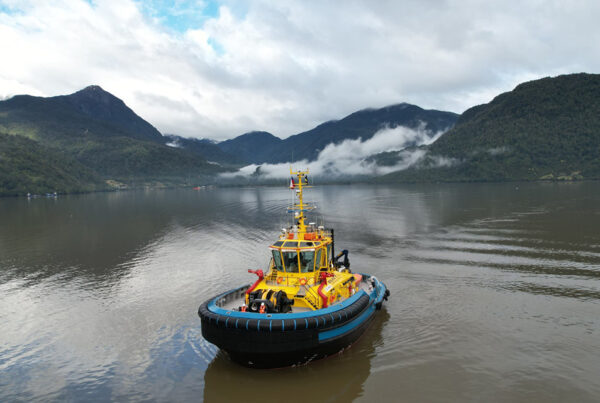
This new equipment is unique in the region, and will allow SVTI to continue its consolidation as the largest and most efficient cargo area center of the region.
Talcahuano, January 26, 2016. San Vicente Terminal Internacional (SVTI), a company where the Chilean SAAM and the U.S.A. SSA Marine participate, materialized the purchase of two new gantry cranes Ship To Shore (STS), which are expected to arrive at the terminal in May, 2018.
These powerful machines, the purchase of which demanded the Company an investment of 20 million US dollars, were manufactured by ZPMC Company, and have state-of-the-art technology, with outstanding dimensions and technical characteristics. The new cranes are 80 meters high, approximately equivalent to a 26-floors building, have a lifting capacity of 100 tons at cargo hook height and a scope of 62 meters (equivalent to 22 rows of containers), which allows them to serve wider ships. These will be the only cranes in the region with these characteristics.
“This equipment will allow us to strengthen the services provided to our customers and operate efficiently with the arrival of increasingly larger ships to the region’s coasts. Furthermore, this allows us to continue positioning ourselves as Biobío’s major and most efficient cargo center, in terms of numbers of tons transferred per linear meter of dock”, explained SVTI’s CEO, Eduardo González.
With the acquisition of these cranes, designed to achieve operational efficiencies of around 40 containers per hour, SVTI continues with its investment plan on infrastructure and equipment, after having inaugurated in July, 2016, the dock extension that allowed it to increase its terminal capacity by 40% and, thus, simultaneously service two Super Post Panamax ships.
SVTI consolidated in 2016 as the first regional terminal in the transfer of containers, and the third in the country, thanks to the total of 6 million tons transferred (around 473 thousand TEU).





